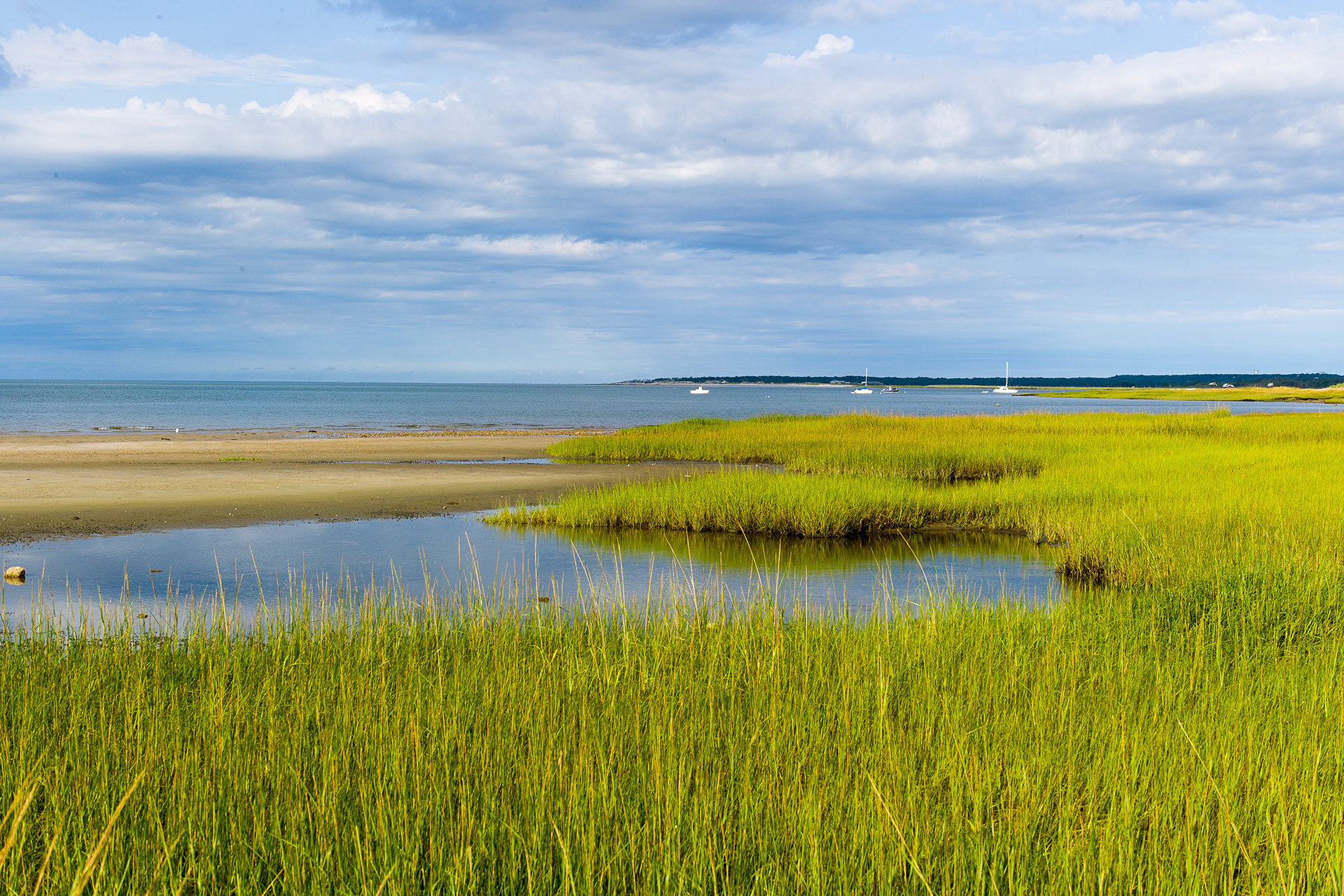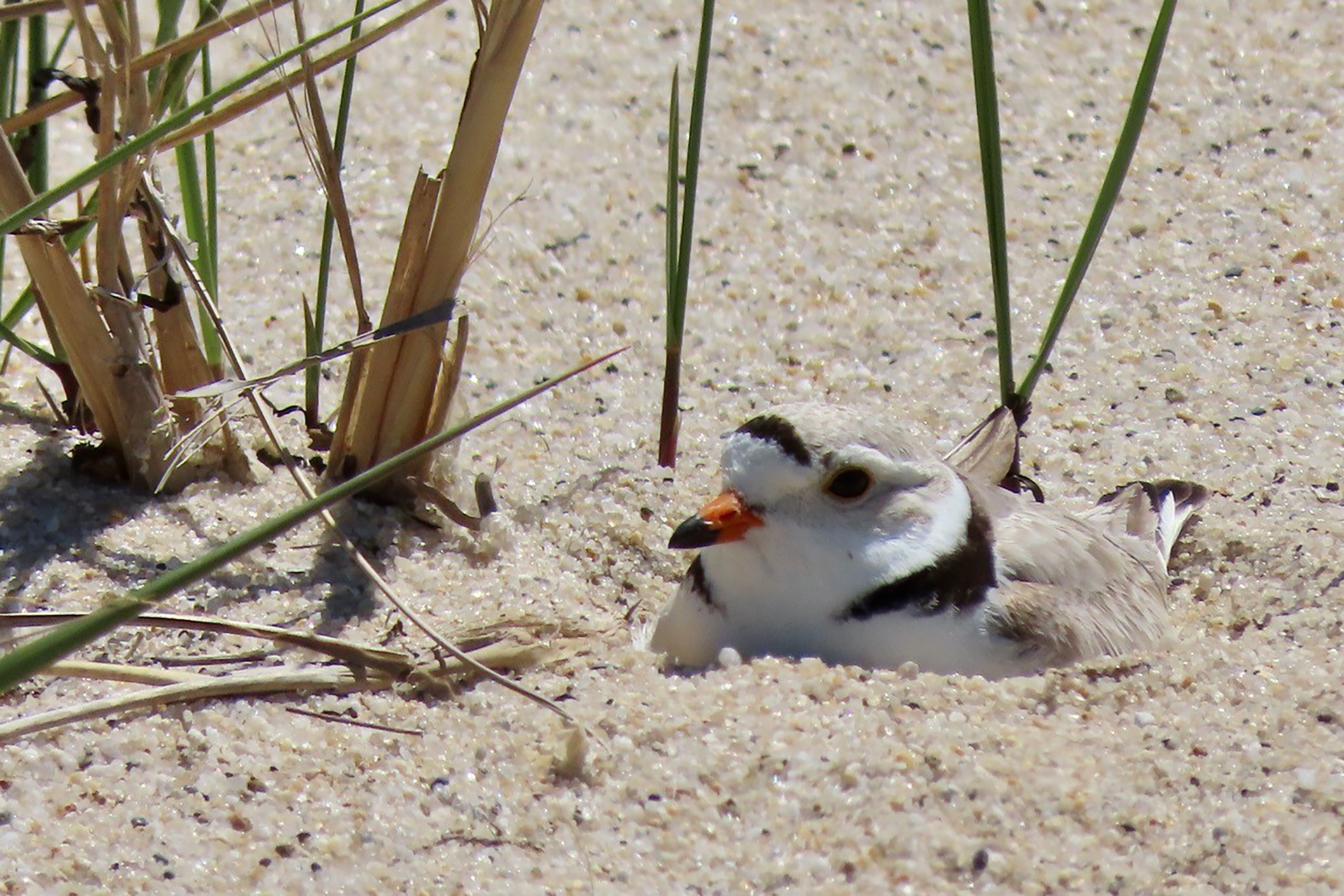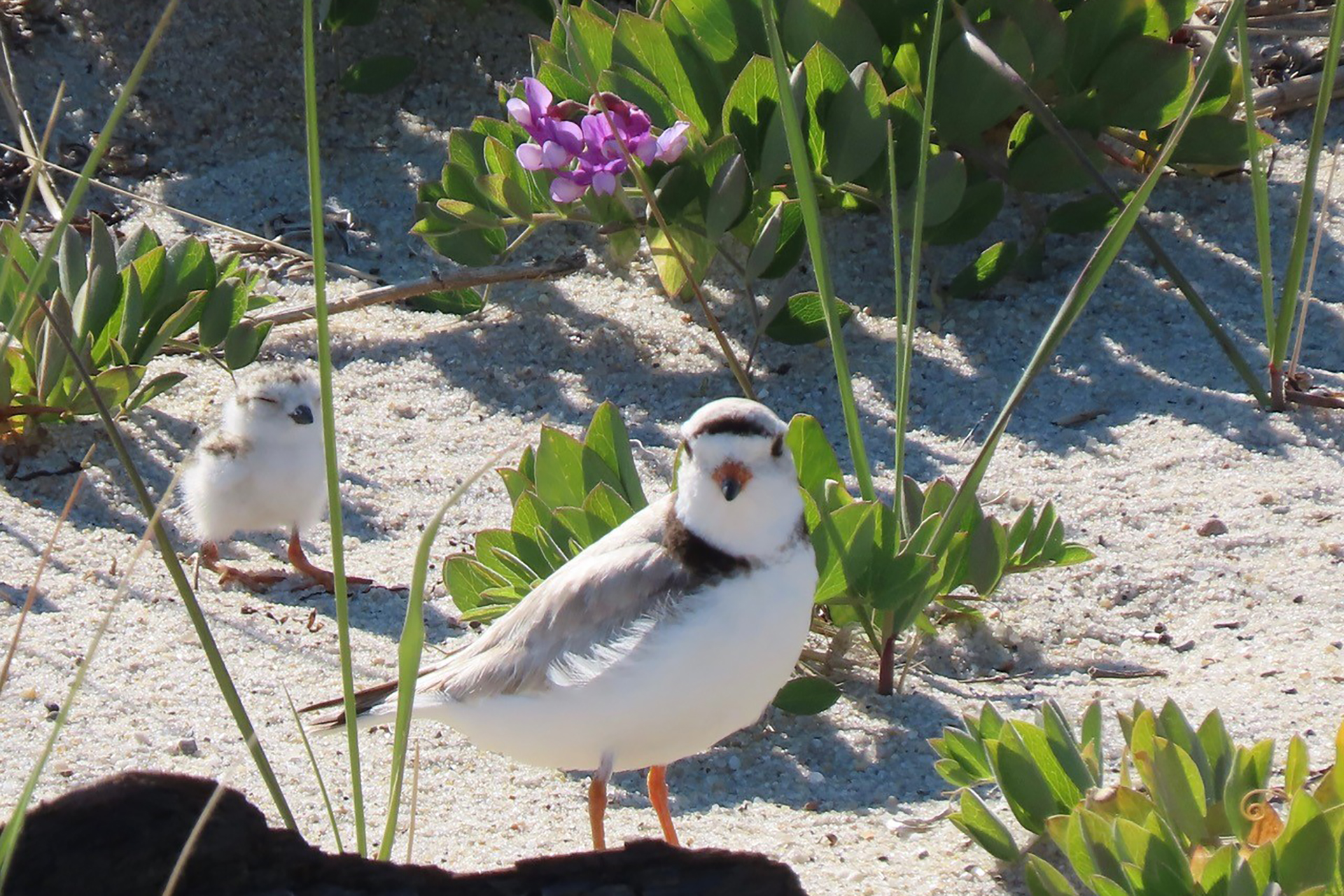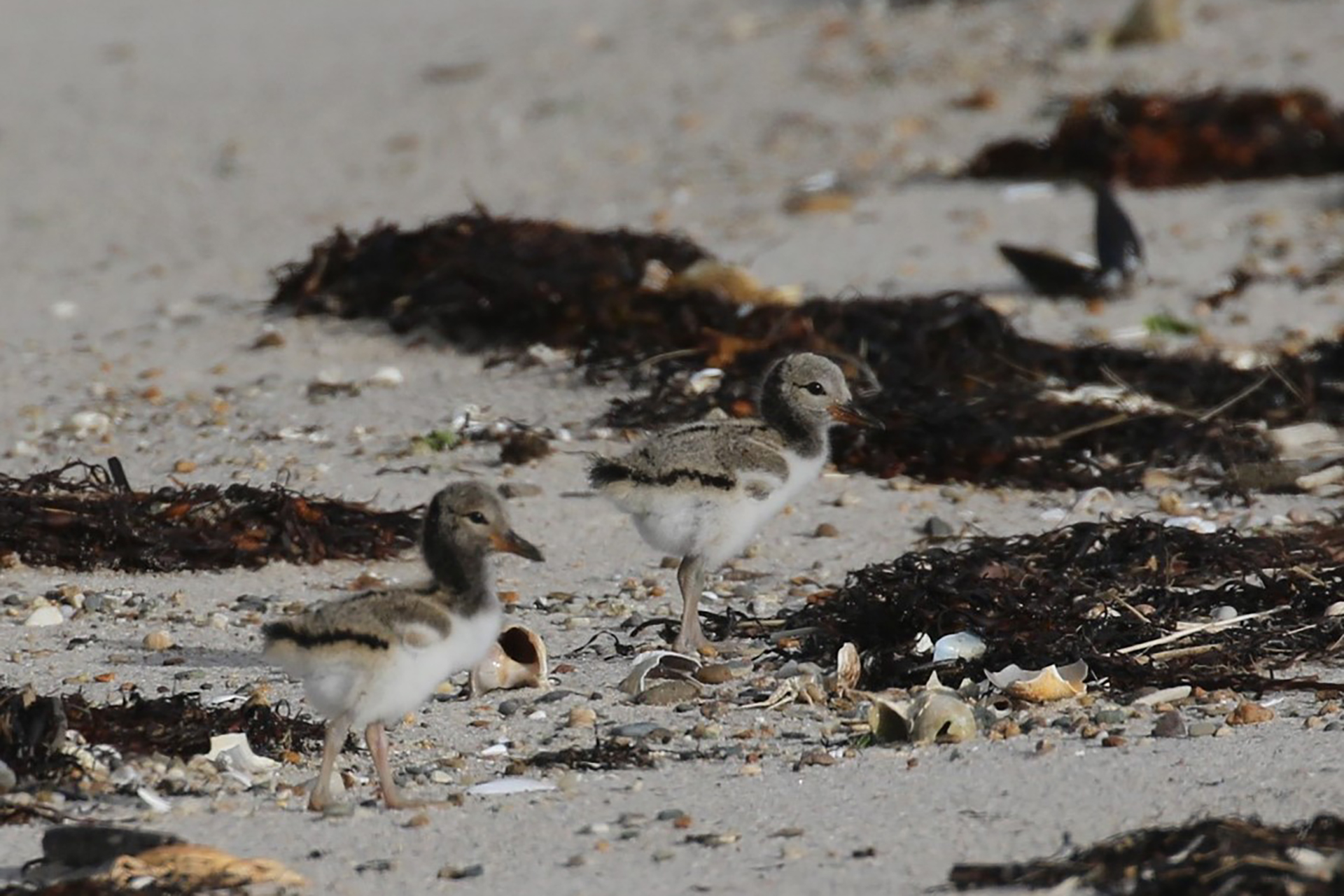Mass Audubon’s Coastal Waterbird Program, a statewide program with a team based on Cape Cod, monitors and protects more than a third of the state’s breeding Piping Plovers, approximately half of the state’s Least Terns, and about a third of its American Oystercatchers. The staff is still crunching the numbers for the season’s official final report. But CWP director Lyra Brennan has a good feeling about the overall success of this breeding season.
“Mass Audubon monitored a total of 303 pairs of plovers last year,” Lyra says. “At this moment we can say we’ve seen a marked increase in pairs this summer.”
Statewide, Piping Plovers have rebounded significantly since being protected under the Endangered Species Act in 1986 when only 135 breeding pairs were recorded here. As of last year, Massachusetts had more than 1,000 pairs, the largest state population of Piping Plovers on the east coast. Those numbers reflect years of hard work, persistence, and outreach.
How We Protect Coastal Waterbirds
From the North Shore of Massachusetts to the Cape and Islands and along the South Coast, Mass Audubon’s Coastal Waterbird staff protects and monitors beach-nesting birds. One form of protection comes in the form of signs and symbolic fencing that surround each nest so that people, dogs, and other critters don’t step on the eggs.
Plover and tern eggs are laid in shallow depressions the birds make in the sand and are extremely well camouflaged. On regular site visits, staff notes tracks and any signs of human disturbance. Public education is also a big part of the job: most beachgoers don’t realize that tiny plover chicks run all over the beach to feed themselves and are unable to fly for about 30 days.
Season Highlights
While the final numbers are crunched, Lyra’s team reports that the Least Tern breeding season included some encouraging signs, such as the addition of some large Least Tern colonies.
Estimating tern breeding success is a challenge since getting a firm count of chicks in a busy (and often defensive) tern colony can be tricky. If a predator manages to enter a colony, the birds can take off and start a new nesting site elsewhere. Lyra suspects overall tern pair numbers may be down, but this year’s productivity is still being calculated.
Good News for Oystercatchers
There’s also encouraging news about another very cool beach-nesting species: American Oystercatchers, large black and white birds with orange, razor-shaped bills. Lyra says the birds appear to have done well on Martha’s Vineyard and the Boston Harbor islands and that we’ll know more once all chicks have fledged.
Protect the Birds, Protect the Beach
While it’s not unusual to hear some beachgoers lament the fencing that provides some nesting space for birds, Lyra says protecting plover, tern, and oystercatcher fencing can also benefit our eroding shorelines.
“One landowner on the North Shore took the time to document through photographs how symbolic fencing allowed his dune to build and become more resilient over time. This has made him very supportive of the fencing and protection of shorebirds!” she notes.
Mass Audubon thanks all the beachgoers who kept an eye out for the birds this summer, educated other visitors, and let us know that they appreciated our work! We look forward to sharing our results in the weeks ahead.
Stay Connected
Don't miss a beat on all the ways you can get outdoors, celebrate nature, and get involved.






